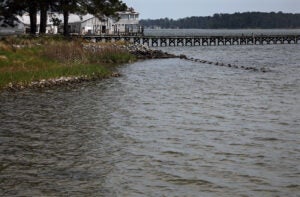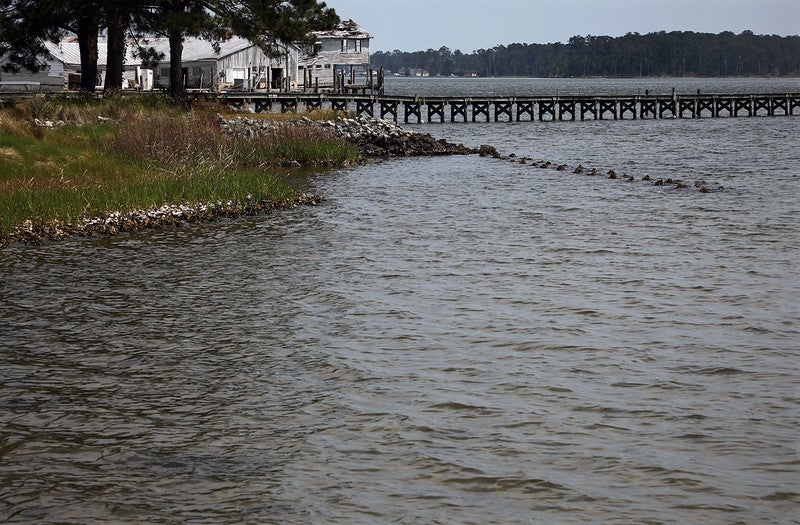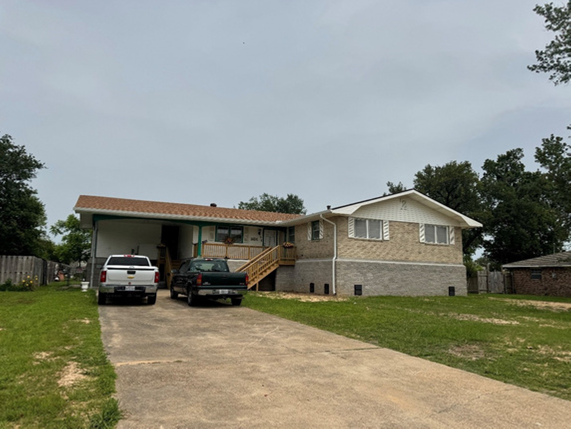
How local projects are shaping Virginia’s flood-resilient future
By Elizabeth Montoya-LaPorte, Intern, Climate Resilient Coasts and Watersheds
Virginia faces a diverse set of flood risks, with sea level rise on the eastern coast, landslides exasperating flood risk in the west and more intense and frequent storms throughout the Commonwealth. Between 2020 and 2060, the number of buildings exposed to an extreme coastal flood is projected to nearly double, while annualized flood damages could increase by 400 percent.
To build resilience against these increasing flood risks, lawmakers created the Virginia Community Flood Preparedness Fund (CFPF) in 2020 under the Virginia Clean Energy and Community Flood Preparedness Act. Since its establishment, the CFPF has supported 86 communities and 212 projects, investing more than 200 million dollars in resilience-building funding.
What is Virginia’s Community Flood Preparedness Fund?
The CFPF provides funding for municipalities to implement community-scale flood resilience efforts. Priority is often placed on projects in low-income areas and for those that prioritize nature-based solutions, supporting many flood-vulnerable communities across the Commonwealth.
Until recently, funding for the CFPF came from Virginia’s Regional Greenhouse Gas Initiative, an East Coast regional cap and trade program. Unfortunately, Governor Youngkin illegally removed Virginia from the initiative in 2023, which leaves long term, reliable CFPF funding less certain and underscores the importance of advocating for continued flood resilience solutions to protect public health and safety, reduce economic loss and safeguard the environment.

Highlighting key flood resilience projects in action
The CFPF has helped and continues to support flood-vulnerable communities in the Commonwealth. Here are a few of its key projects in action:
Transforming a stormwater park in Virginia Beach
Funding from the CFPF is helping transform a Virginia Beach golf course into a multi-faceted stormwater park, which can mitigate flooding, restore natural systems and provide recreational amenities. Controlling stormwater has immediate benefits to the surrounding residential community and exemplifies how residential storm water mitigation methods can positively transform existing infrastructure.
Improving roadway flooding sensors in Hampton Roads
In Hampton Roads, CFPF funding is improving and building out the region’s existing network of roadway sensors so residents can receive better real-time updates on roadway flooding. This project meets a community need as almost half of all workers drive across localities for their jobs and in areas surrounded by major bodies of water. It’s shown that accurate roadway updates can improve safety and flooding impacts on residents, underscoring the importance of this initiative.
Using green and grey infrastructure to build resilience in Northampton County
A CFPF project that integrates green and grey infrastructure is building flood resilience in Northampton County. Improvements include the construction of a bulkhead to protect those working on the waterfront, as well as restoring shorelines and wetlands to their natural habitat.
This project is spearheaded by the local community and consideration is given to the economic needs of its residents who rely on safe access to work on the coast.
Removing an abandoned dam and restoring riverbanks in Tazwell County
Tazwell County is home to many historic mill dams, including an abandoned one which disrupts the natural flow of a nearby river. This disruption exacerbates flood risk and prevents migratory fish from accessing upstream habitats.
CFPF funding is dedicated to studying the flood risk posed by this abandoned mill dam located upstream of a historically black community and causes recurring flooding. The project sits within the broader regional push in Southern Virginia to remove abandoned dams and restore riverbanks to strengthen natural flood plains, promote habitat connectivity and improve health and safety.
Looking at the big picture
Local CFPF projects are essential for informing Virginia’s resilience priorities and offer an opportunity to introduce innovative ideas into flood mitigation efforts. Studies, projects and planning developed through the CFPF also support a statewide effort in developing a Flood Protection Master Plan and implementing future iterations of the Coastal Resilience Master Plan.

It is essential that leaders continue to support these critical projects and seek long term, reliable funding that builds community flood resilience.
Find out what projects are being funded in your region and how to voice a concern about flood risks in your community. Discover more here.












